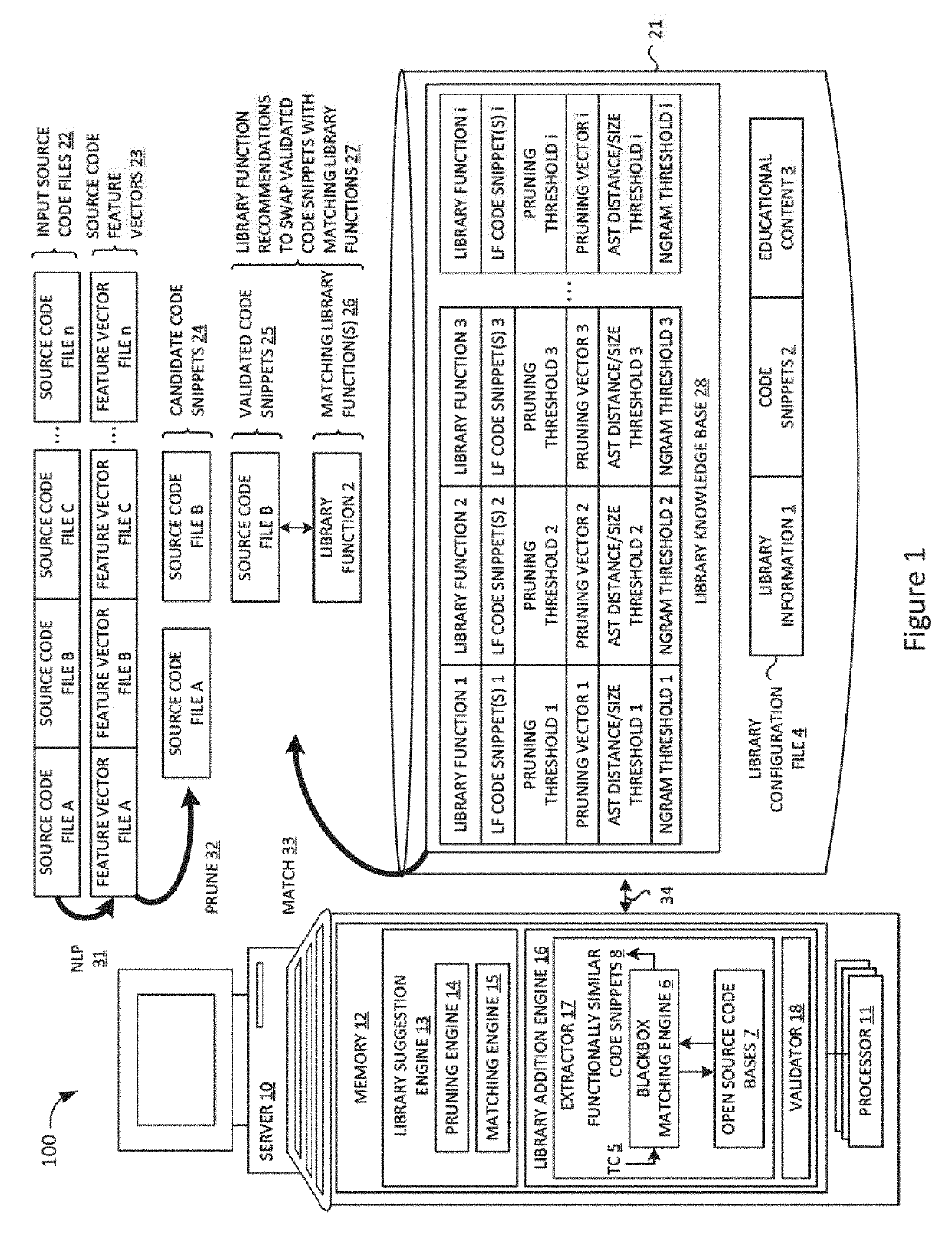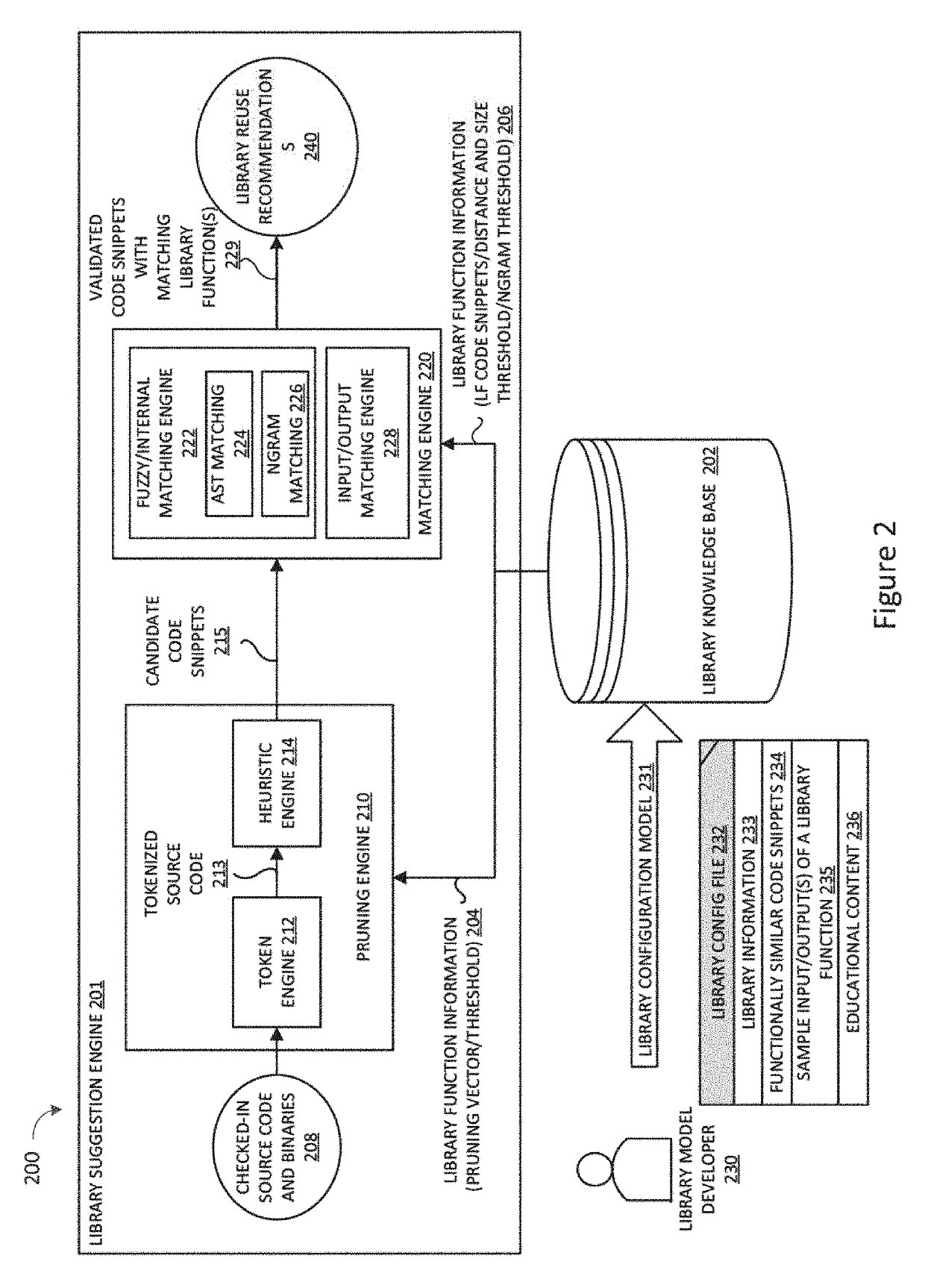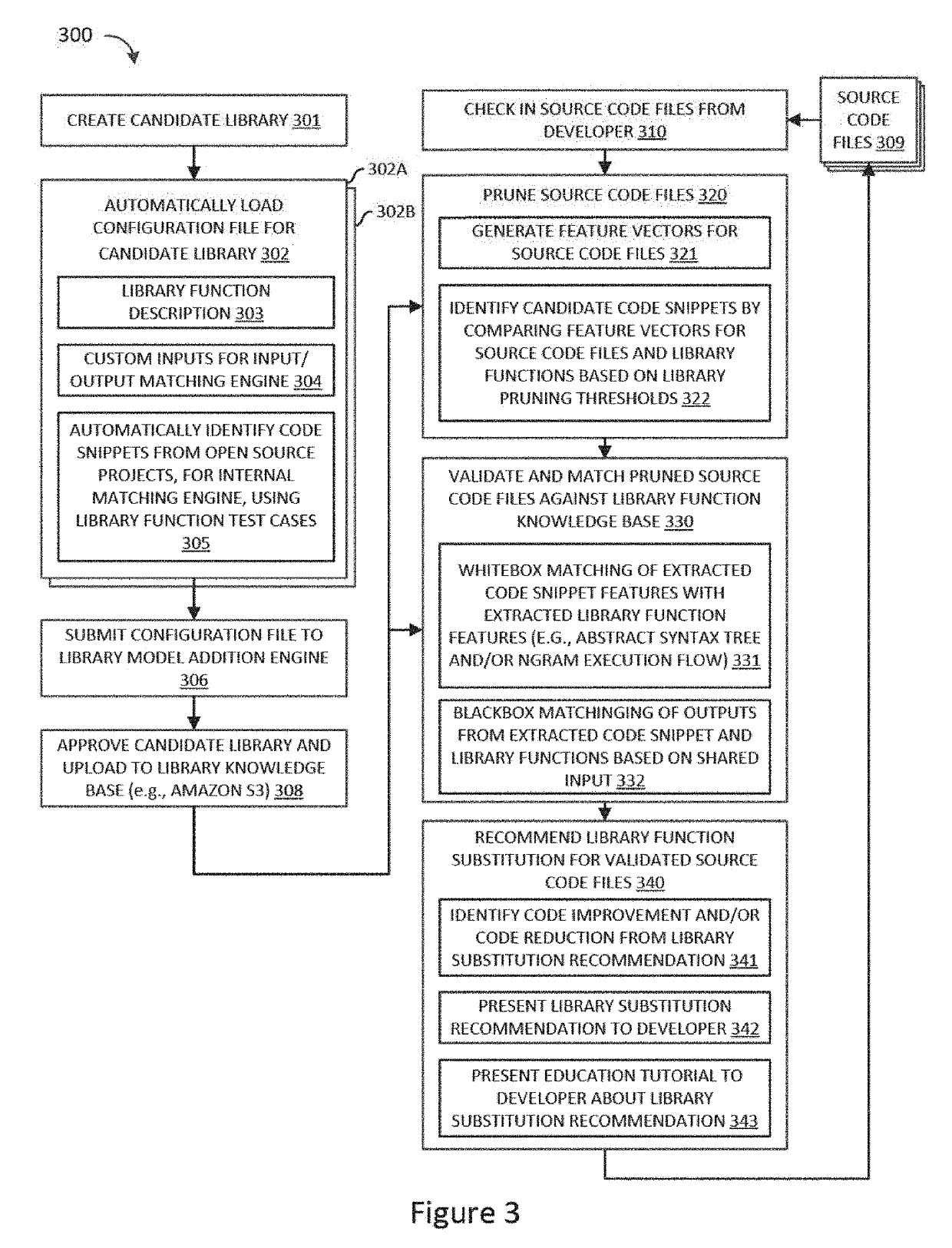Automating identification of code snippets for library suggestion models
a library suggestion and code snippet technology, applied in the field of information processing, can solve the problems of code which can suffer from performance limitations and other sub-optimalities, reduce performance functionality, and low quality or robustness, so as to improve code reuse, improve codebase maintainability, and check the correctness of code snippets.
- Summary
- Abstract
- Description
- Claims
- Application Information
AI Technical Summary
Benefits of technology
Problems solved by technology
Method used
Image
Examples
Embodiment Construction
[0019]A library model addition engine, methodology, and apparatus are described for adding a candidate library model to a library knowledge base by generating and validating a library configuration file containing data needed to recognize the library model, including automatically generated code snippets that are functionally similar to the candidate library model and that are identified by passing library function test cases to an input / output matching engine which evaluates open source projects to identify functionally similar code snippets for use with an internal or whitebox matching engine. While various details are set forth in the following description, it will be appreciated that the present invention may be practiced without these specific details. For example, selected aspects are shown in block diagram form, rather than in detail, in order to avoid obscuring the present invention. Some portions of the detailed descriptions provided herein are presented in terms of algorit...
PUM
 Login to View More
Login to View More Abstract
Description
Claims
Application Information
 Login to View More
Login to View More - R&D
- Intellectual Property
- Life Sciences
- Materials
- Tech Scout
- Unparalleled Data Quality
- Higher Quality Content
- 60% Fewer Hallucinations
Browse by: Latest US Patents, China's latest patents, Technical Efficacy Thesaurus, Application Domain, Technology Topic, Popular Technical Reports.
© 2025 PatSnap. All rights reserved.Legal|Privacy policy|Modern Slavery Act Transparency Statement|Sitemap|About US| Contact US: help@patsnap.com



